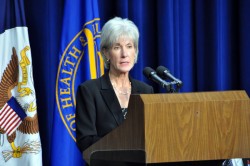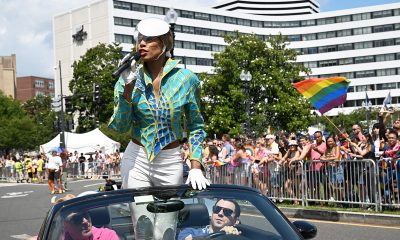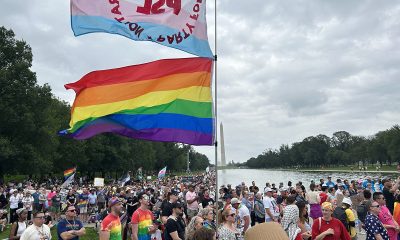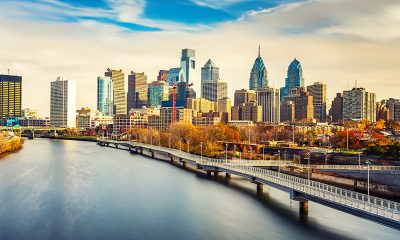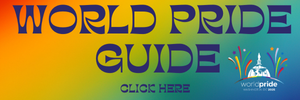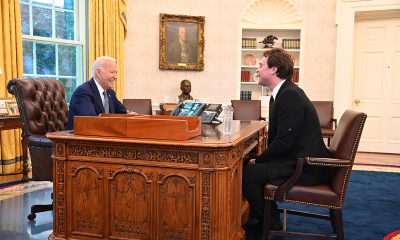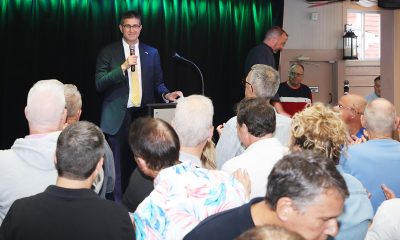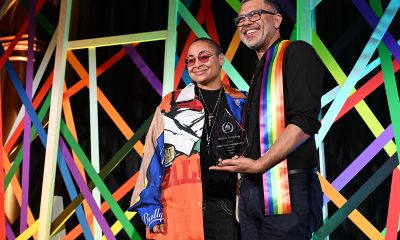National
Sebelius promises to collect LGBT data in health surveys
Advocates call for transparency in devising questions
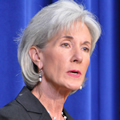
Secretary of Health & Human Services Kathleen Sebelius committed on Tuesday to start the collection of LGBT data as part of federal health surveys, although she said the questions that would be used to gather the information must be market-tested before they’re made part of any questionnaire.
During a news conference at the White House, Sebelius said in response to a question from the Washington Blade that the Department of Health & Human Services “fully intend[s] to collect LGBT data” through federal surveys.
“So it is definitely a commitment,” Sebelius said. “We will be adding data questions to the national health surveys. And right now we are looking at developing a slew of questions, market-testing them, coming back and making sure we have the right way to solicit the information that we need.”
Sebelius said including LGBT questions on federal health surveys has been difficult because the federal government hasn’t engaged in such data collection before and hasn’t settled on the right way to ask such questions. The secretary asserted the Department of Health & Human Services is market-testing questions to make sure they’re worded in the right way to collect the necessary information.
“The problem is that it’s never been collected, and what our folks came back to us with is we have to figure out — and we’re working with providers and advocates right now to actually market-test the questions — how to ask questions in a way that they elicit accurate responses, because collecting data that doesn’t give an accurate picture is not very helpful in the first place,” Sebelius said. “And there has been so little attempt, either directly to consumers or to parents or to anybody else, to ask questions about LGBT health issues that we don’t even know how to ask them.”
Although Sebelius expressed a commitment to include LGBT data collection as part of federal health surveys, she didn’t offer a timeline for when this market testing would be complete or when the questions would be included on the surveys.
To facilitate a better picture of the health of LGBT Americans, advocates have been seeking the inclusion of questions related to sexual orientation and gender identity on major federal surveys, such as the National Health Interview Survey and the Behavioral Risk Factor Surveillance System.
To gather data on sexual orientation, a survey could ask whether someone identifies as lesbian, gay or bisexual. Another survey more focused on sexual health, such as an HIV survey, could ask about sexual behavior and whether the responder has had sex with someone of the same gender.
For gender identity, a survey could ask whether respondents identify as transgender; if someone has transitioned from one gender to another over the course of their lives; or ask about non-conformity, regardless of how the respondent identifies their gender.
Advocates are hoping that data obtained from asking these questions may help ascertain whether certain health problems affect LGBT people more frequently than others, such as mental health problems or alcohol and drug abuse.
Joe Solmonese, president of the Human Rights Campaign, praised Sebelius in a statement for expressing her commitment to including the questions on the surveys and said the change is needed to address LGBT health disparities.
“It has been repeatedly demonstrated — including in a major LGBT health report issued just months ago by the Institute of Medicine —that LGBT people experience significant health disparities and that we cannot fully understand those disparities and how to address them until major health studies ask about our community,” Solmonese said.
Solmonese was referring to the report from the non-governmental United States National Academy of Sciences’ Institute of Medicine Report, published March 31, which found that researchers have insufficient data on LGBT people in health studies, prompting a tendency to treat LGBT people as a single homogeneous group.
Darlene Nipper, deputy executive director of the National Gay & Lesbian Task Force, also commended Sebelius for making the commitment for LGBT data inclusion as a means to address health problems affecting LGBT people.
“There is an urgent need to address health disparities because LGBT lives literally hang in the balance,” Nipper said. “We’re pleased that HHS is moving forward on data collection for the LGBT community in federal health surveys. While not typically headline grabbers, LGBT data collection in federal surveys is critical to the ultimate well-being of our community.”
A number of LGBT advocates also called for greater transparency in the way that the Department of Health & Human Services devises the potential questions to obtain health data on the LGBT population.
Gary Gates, distinguished scholar at the Williams Institute at the University of California in Los Angeles, called the commitment from Sebelius “fantastic,” but said questions on sexual orientation and gender identity “need not start from scratch.”
“We know a great deal already about how to measure sexual orientation and some recent studies have also highlighted promising approaches to measuring gender identity,” Gates said. “HHS now has a real opportunity to develop an open and transparent process as they assess how to best utilize this body of research to inform how they achieve LGBT inclusion in their data collection. That process must be transparent and involve experts from both inside and outside of the government as well as experts from the LGBT community.”
Nipper made similar remarks on the need for openness in the way the LGBT-related questions for the health surveys are developed.
“We encourage the secretary to take this directive and turn it into action in a transparent process that includes experts from both inside and outside of the federal government to implement it effectively,” Nipper said. “The sooner this happens, the sooner initiatives like Healthy People and the National Prevention Strategy will be able to adequately address the many health needs of our community.”
The National Prevention Strategy, a comprehensive plan aimed at increasing the number of Americans who are healthy at every stage of their lives, was published last week by the Department of Health & Human Services’ National Prevention Council. The strategy recognizes that good health comes not just from quality medical care, but also from clean air and water, safe work sites and healthy foods.
A transcript of the exchange between the Blade and Sebelius follows:
Washington Blade: Madam Secretary, I have a question for you on a different topic. As I’m sure you know, the absence of nationwide data about the LGBT community’s health needs and disparities has been a problem. Organizations want government assistance to address problems. The government insists on data to back up these requests, but the government won’t collect data, so the LGBT community remains stymied.
It’s public knowledge that groups have been advocating with HHS to address the data collection issue — specific things like including LGBT questions on the National Health Interview Survey and the Behavioral Risk Factor Surveillance System.
You and the president have been advocates for evidence-based decision-making. What’s the holdup here?
Kathleen Sebelius: Well, actually, it’s a great question, and we fully intend to collect LGBT data. The problem is that it’s never been collected, and what our folks came back to us with is we have to figure out — and we’re working with providers and advocates right now to actually market-test the questions — how to ask questions in a way that they elicit accurate responses, because collecting data that doesn’t give an accurate picture is not very helpful in the first place. And there has been so little attempt, either directly to consumers or to parents or to anybody else, to ask questions about LGBT health issues that we don’t even know how to ask them.
So it is definitely a commitment. We will be adding data questions to the National Health Surveys. And right now we are looking at developing a slew of questions, market-testing them, coming back and making sure we have the right way to solicit the information that we need.
U.S. Supreme Court
Activists rally for Andry Hernández Romero in front of Supreme Court
Gay asylum seeker ‘forcibly deported’ to El Salvador, described as political prisoner
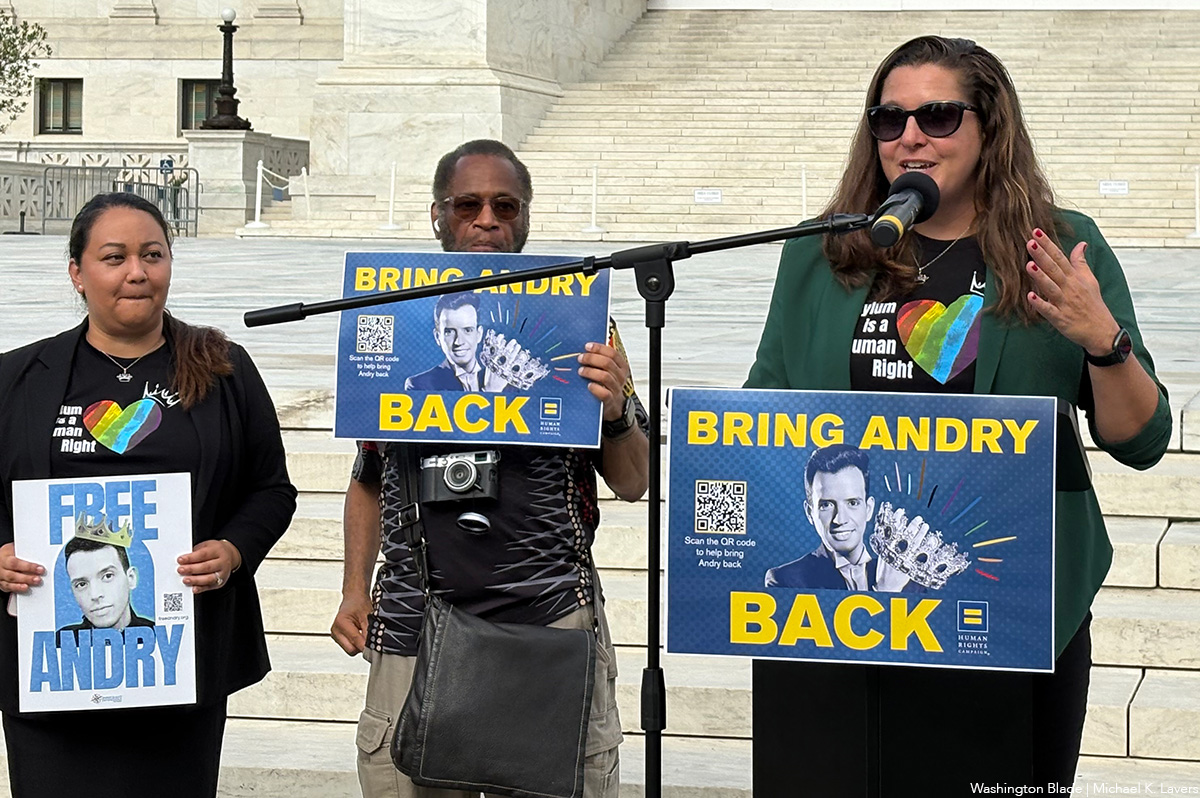
More than 200 people gathered in front of the U.S. Supreme Court on Friday and demanded the Trump-Vance administration return to the U.S. a gay Venezuelan asylum seeker who it “forcibly disappeared” to El Salvador.
Lindsay Toczylowski, president of the Immigrant Defenders Law Center, a Los Angeles-based organization that represents Andry Hernández Romero, is among those who spoke alongside U.S. Rep. Mark Takano (D-Calif.) and Human Rights Campaign Campaigns and Communications Vice President Jonathan Lovitz. Sarah Longwell of the Bulwark, Pod Save America’s Jon Lovett, and Tim Miller are among those who also participated in the rally.
“Andry is a son, a brother. He’s an actor, a makeup artist,” said Toczylowski. “He is a gay man who fled Venezuela because it was not safe for him to live there as his authentic self.”
(Video by Michael K. Lavers)
The White House on Feb. 20 designated Tren de Aragua, a Venezuelan gang, as an “international terrorist organization.”
President Donald Trump on March 15 invoked the Alien Enemies Act of 1798, which the Associated Press notes allows the U.S. to deport “noncitizens without any legal recourse.” The Trump-Vance administration subsequently “forcibly removed” Hernández and hundreds of other Venezuelans to El Salvador.
Toczylowski said she believes Hernández remains at El Salvador’s Terrorism Confinement Center, a maximum-security prison known by the Spanish acronym CECOT. Toczylowski also disputed claims that Hernández is a Tren de Aragua member.
“Andry fled persecution in Venezuela and came to the U.S. to seek protection. He has no criminal history. He is not a member of the Tren de Aragua gang. Yet because of his crown tattoos, we believe at this moment that he sits in a torture prison, a gulag, in El Salvador,” said Toczylowski. “I say we believe because we have not had any proof of life for him since the day he was put on a U.S. government-funded plane and forcibly disappeared to El Salvador.”
“Andry is not alone,” she added.
Takano noted the federal government sent his parents, grandparents, and other Japanese Americans to internment camps during World War II under the Alien Enemies Act. The gay California Democrat also described Hernández as “a political prisoner, denied basic rights under a law that should have stayed in the past.”
“He is not a case number,” said Takano. “He is a person.”
Hernández had been pursuing his asylum case while at the Otay Mesa Detention Center in San Diego.
A hearing had been scheduled to take place on May 30, but an immigration judge the day before dismissed his case. Immigrant Defenders Law Center has said it will appeal the decision to the Board of Immigration Appeals, which the Justice Department oversees.
“We will not stop fighting for Andry, and I know neither will you,” said Toczylowski.
Friday’s rally took place hours after Attorney General Pam Bondi said Kilmar Abrego Garcia, a Maryland man who the Trump-Vance administration wrongfully deported to El Salvador, had returned to the U.S. Abrego will face federal human trafficking charges in Tennessee.
National
A husband’s story: Michael Carroll reflects on life with Edmund White
Iconic author died this week; ‘no sunnier human in the world’
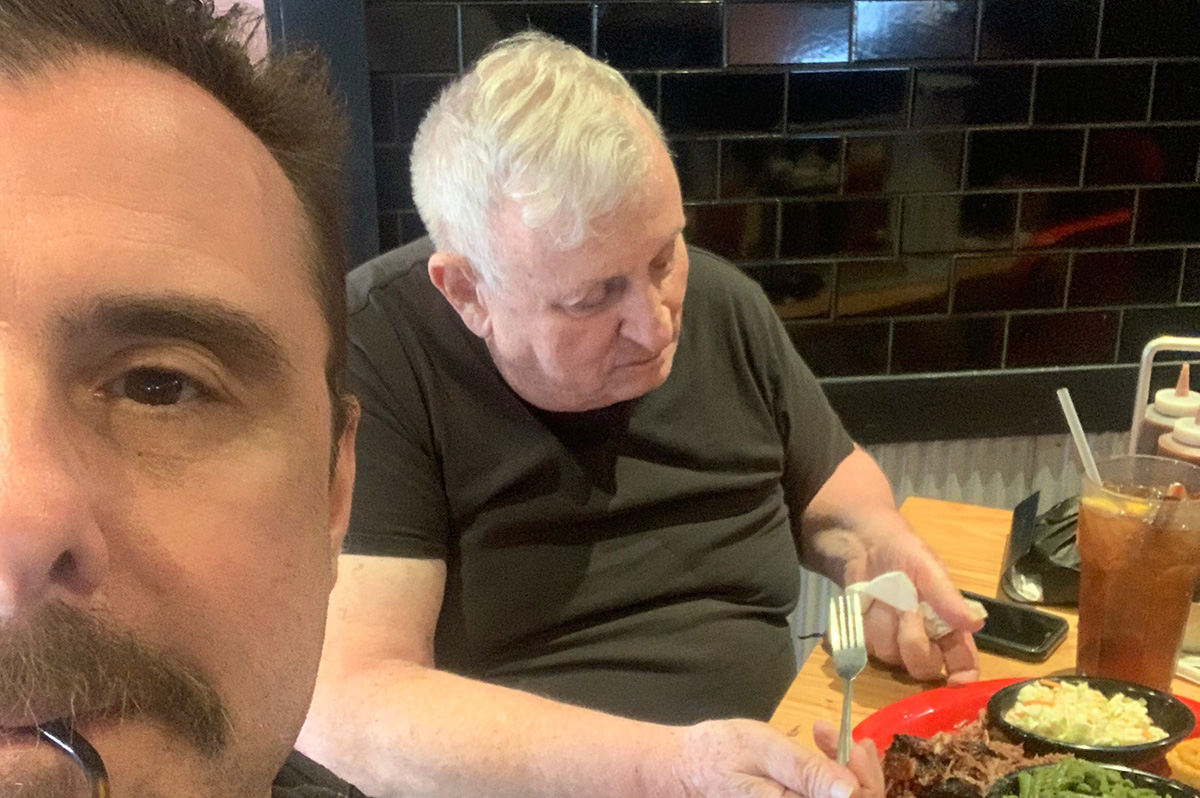
Unlike most gay men of my generation, I’ve only been to Fire Island twice. Even so, the memory of my first visit has never left me. The scenery was lovely, and the boys were sublime — but what stood out wasn’t the beach or the parties. It was a quiet afternoon spent sipping gin and tonics in a mid-century modern cottage tucked away from the sand and sun.
Despite Fire Island’s reputation for hedonism, our meeting was more accident than escapade. Michael Carroll — a Facebook friend I’d chatted with but never met — mentioned that he and his husband, Ed, would be there that weekend, too. We agreed to meet for a drink. On a whim, I checked his profile and froze. Ed was author Edmund White.
I packed a signed copy of Carroll’s “Little Reef” and a dog-eared hardback of “A Boy’s Own Story,” its spine nearly broken from rereads. I was excited to meet both men and talk about writing, even briefly.
Yesterday, I woke to the news that Ed had passed away. Ironically, my first thought was of Michael.
This week, tributes to Edmund White are everywhere — rightly celebrating his towering legacy as a novelist, essayist, and cultural icon. I’ve read all of his books, and I could never do justice to the scope of a career that defined and chronicled queer life for more than half a century. I’ll leave that to better-prepared journalists.
But in those many memorials, I’ve noticed something missing. When Michael Carroll is mentioned, it’s usually just a passing reference: “White’s partner of thirty years, twenty-five years his junior.” And yet, in the brief time I spent with this couple on Fire Island, it was clear to me that Michael was more than a footnote — he was Ed’s anchor, editor, companion, and champion. He was the one who knew his husband best.
They met in 1995 after Michael wrote Ed a fan letter to tell him he was coming to Paris. “He’d lost the great love of his life a year before,” Michael told me. “In one way, I filled a space. Understand, I worshiped this man and still do.”
When I asked whether there was a version of Ed only he knew, Michael answered without hesitation: “No sunnier human in the world, obvious to us and to people who’ve only just or never met him. No dark side. Psychology had helped erase that, I think, or buffed it smooth.”
Despite the age difference and divergent career arcs, their relationship was intellectually and emotionally symbiotic. “He made me want to be elegant and brainy; I didn’t quite reach that, so it led me to a slightly pastel minimalism,” Michael said. “He made me question my received ideas. He set me free to have sex with whoever I wanted. He vouchsafed my moods when they didn’t wobble off axis. Ultimately, I encouraged him to write more minimalistically, keep up the emotional complexity, and sleep with anyone he wanted to — partly because I wanted to do that too.”
Fully open, it was a committed relationship that defied conventional categories. Ed once described it as “probably like an 18th-century marriage in France.” Michael elaborated: “It means marriage with strong emotion — or at least a tolerance for one another — but no sex; sex with others. I think.”
That freedom, though, was always anchored in deep devotion and care — and a mutual understanding that went far beyond art, philosophy, or sex. “He believed in freedom and desire,” Michael said, “and the two’s relationship.”
When I asked what all the essays and articles hadn’t yet captured, Michael paused. “Maybe that his writing was tightly knotted, but that his true personality was vulnerable, and that he had the defense mechanisms of cheer and optimism to conceal that vulnerability. But it was in his eyes.”
The moment that captured who Ed was to him came at the end. “When he was dying, his second-to-last sentence (garbled then repeated) was, ‘Don’t forget to pay Merci,’ the cleaning lady coming the next day. We had had a rough day, and I was popping off like a coach or dad about getting angry at his weakness and pushing through it. He took it almost like a pack mule.”
Edmund White’s work shaped generations — it gave us language for desire, shame, wit, and liberation. But what lingers just as powerfully is the extraordinary life Ed lived with a man who saw him not only as a literary giant but as a real person: sunny, complex, vulnerable, generous.
In the end, Ed’s final words to his husband weren’t about his books or his legacy. They were about care, decency, and love. “You’re good,” he told Michael—a benediction, a farewell, maybe even a thank-you.
And now, as the world celebrates the prolific writer and cultural icon Edmund White, it feels just as important to remember the man and the person who knew him best. Not just the story but the characters who stayed to see it through to the end.
District of Columbia
In town for WorldPride? Take a D.C. LGBTQ walking tour
Scenes of protest, celebration, and mourning
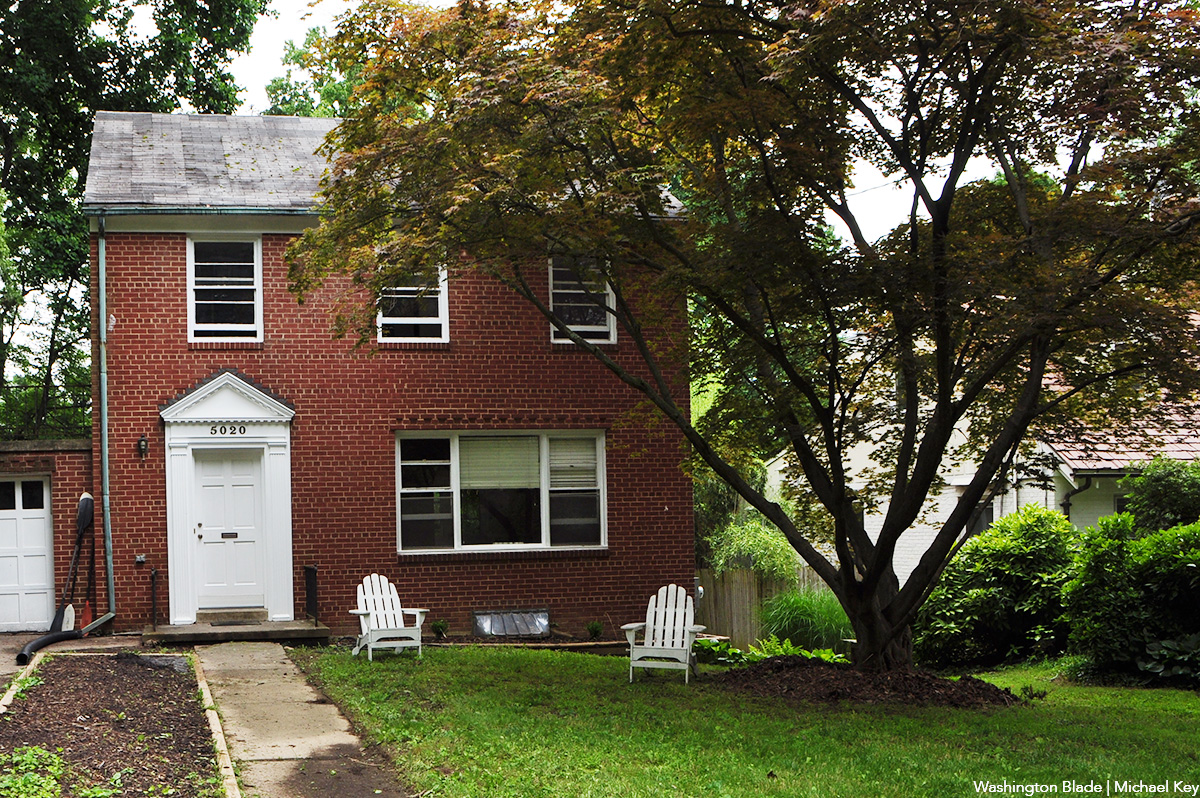
As Washington welcomes the world for WorldPride, it’s essential to honor the city’s deep-rooted LGBTQ history—an integral part of the broader story of the nation’s capital. The following locations have served as cornerstones of queer life and activism in D.C., shaping both local and national movements for LGBTQ rights. So take a walk around “the gayest city in America” and check out these sites.
DUPONT CIRCLE AREA
Dupont Circle
Central hub of LGBTQ life since the early 20th century, hosting Pride parades, Dyke Marches, and cruising culture. A long-standing site of protests and celebrations.
Washington Hilton – 1919 Connecticut Ave NW
Hosted D.C.’s first major hotel drag event in 1968 and the iconic Miss Adams Morgan Pageant. Protested in 1978 during Anita Bryant’s appearance.
Lesbian Avengers – 1426 21st St NW
Formed in 1992, the group empowered lesbians through bold direct actions. They met in Dupont Circle and launched the city’s first Dyke March.
Lambda Rising Bookstore (former) – 1724 20th Street NW
D.C.’s first LGBTQ bookstore and the birthplace of the city’s inaugural Pride celebration in 1975.
Women In The Life (former office) – 1623 Connecticut Ave NW
Founded in 1993 by Sheila Alexander-Reid as a safe space and support network for lesbians of color.
17th Street NW Corridor – Between P & R Streets NW
Core of the LGBTQ business district, home to the annual High Heel Race in October and the June Block Party celebrating the origins of D.C. Pride.
CAPITOL HILL / SOUTHEAST
Tracks (former) – 80 M St SE
Once D.C.’s largest gay club, famous for inclusive parties, RuPaul shows, and foam nights from 1984 to 2000.
Ziegfeld’s / The Other Side – 1345 Half Street SE
Legendary drag venue since 1978, hosting famed performers like Ella Fitzgerald.
Club 55 / Waaay Off Broadway – 55 K Street SE
Converted theater central to D.C.’s early drag and Academy pageant scenes.
Congressional Cemetery – 1801 E Street SE
Resting place of LGBTQ figures like Sgt. Leonard Matlovich and Peter Doyle. Offers queer history tours.
Mr. Henry’s – 601 Pennsylvania Ave SE
LGBTQ-friendly bar since 1966 and the launching stage for Roberta Flack’s career.
The Furies Collective House – 219 11th Street SE
Home to a 1970s lesbian feminist collective that published “The Furies.” Members included Rita Mae Brown.
ARCHIVES / PENN QUARTER
Archives Metro & Center Market Site – 7th St & Pennsylvania Ave NW
Where Walt Whitman met Peter Doyle in 1865, commemorated by a sculpture linking Whitman and poet Fernando Pessoa.
COLUMBIA HEIGHTS / PETWORTH
Palm Ballroom (former) – 4211 9th Street NW
Mid-20th century venue for Black drag balls and LGBTQ events during segregation.
NATIONAL MALL AREA
National Mall / Washington Monument Grounds
Historic site of LGBTQ activism and remembrance, including the 1987 display of the AIDS Memorial Quilt and a mass same-sex wedding. Hosted major civil rights marches in 1979, 1987, and 1993.
NORTHWEST DC
Dr. Franklin E. Kameny House – 5020 Cathedral Ave NW
Home of gay rights pioneer Frank Kameny and the Mattachine Society of Washington; now a national landmark.
LAFAYETTE SQUARE / WHITE HOUSE
Lafayette Park – Pennsylvania Ave & 16th St NW
Historic gay cruising area and epicenter of government surveillance during the Lavender Scare.
Data from: SSecret City by James Kirchick, The Deviant’s War by Frank Kameny, Brett Beemyn, The Rainbow History Project, NPS Archives, Washington Blade Archives.

